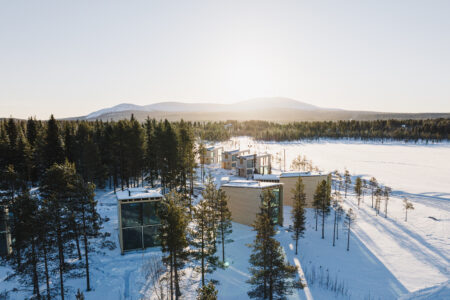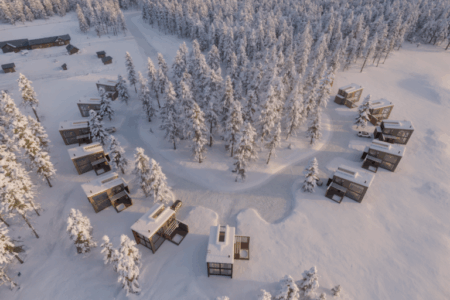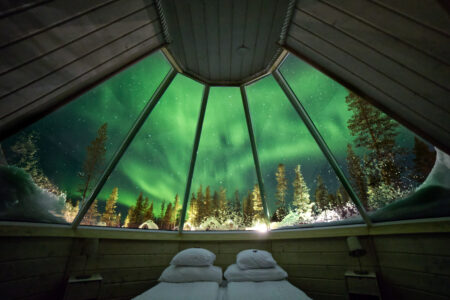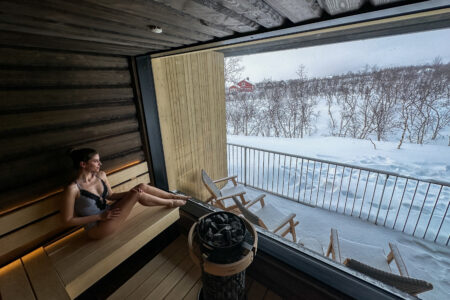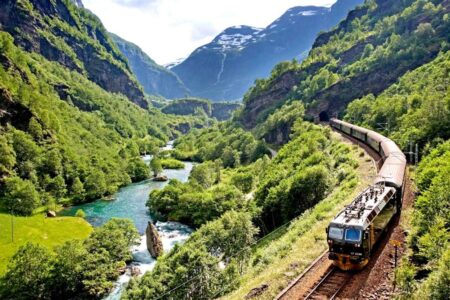When you first witness the Aurora Borealis shimmering across the Arctic sky, it feels almost otherworldly—like the universe itself is alive with colour. But behind this natural spectacle lies a fascinating story of solar winds, atmospheric particles, and the delicate physics of our planet’s magnetic field.
Here’s what creates each mesmerising hue:
1. Green – The Signature Glow
What causes it?
Green is the most common aurora colour and occurs when energetic particles from the sun collide with oxygen molecules about 100–300 km (60–190 miles) above Earth’s surface. As these oxygen atoms return to their normal state, they emit light in the green portion of the spectrum.
Wavelength: ~557.7 nanometres
Why it inspires:
This vivid green feels almost alive, like nature itself is breathing luminous energy into the polar night.
2. Red – The Rare Crimson Veil
What causes it?
Red auroras are produced by oxygen atoms as well, but at much higher altitudes—above 300 km (190 miles). Because the air is thinner at these heights, excited oxygen atoms can stay charged longer, emitting a softer, crimson glow.
Wavelength: ~630 nanometres
Why it inspires:
Red auroras are rarer, often appearing as a faint backdrop behind green bands. Seeing them is like glimpsing a hidden dimension in the night sky.
3. Pink and Magenta – The Transition Zones
What causes it?
Pink and purple hues often appear when green and red emissions mix. Additionally, nitrogen molecules excited by solar particles can emit blue and red light simultaneously, which blend into purples and magentas.
Wavelengths: Mix of ~427.8 nm (blue) and ~630 nm (red)
Why it inspires:
These fleeting colours feel like a cosmic brushstroke—delicate and surreal.
4. Blue – The Elusive Fringe
What causes it?
Blue auroras occur when solar particles strike nitrogen molecules at lower altitudes—below 100 km (60 miles). Because these collisions require more energetic particles, blue is typically seen during intense geomagnetic storms.
Wavelength: ~427.8 nanometres
Why it inspires:
Blue is the rarest visible aurora colour, often appearing at the lower edges of the display, adding an electric, almost sci-fi feeling.
5. Violet – The Final Flourish
What causes it?
In some displays, you might see violet or deep purple shades. These arise from highly energetic interactions with nitrogen and the blending of blue and red emissions.
Wavelengths: Combination of multiple emissions
Why it inspires:
Violet auroras are a reminder that the northern lights are never the same twice—always evolving, always unique.
How It All Comes Together
The Aurora Borealis is a vivid demonstration of Earth’s magnetic shield at work. Here’s how it unfolds:
- The Sun unleashes a solar wind, carrying charged particles toward Earth.
- As these particles approach, they are channeled by the planet’s magnetic field toward the poles.
- They collide with gases in the upper atmosphere, transferring energy that is re-emitted as light.
- The type of gas and altitude of the collision determine which colour you see.
It’s science—and it’s also pure poetry.
More Than Just a Light Show
While the physics of the aurora are astonishing, what draws travelers north year after year is something deeper: the sense that you are standing at the edge of our world, witnessing a celestial performance choreographed by the universe itself.
It’s a reminder that, even in our modern lives, there are still places where nature can surprise and humble us, painting the sky with colours no photograph can fully capture.
Experience the Magic Firsthand
At Off the Map Travel, we curate tailor-made journeys to the heart of the aurora zone, so you can stand under the lights and feel the science and wonder for yourself.
